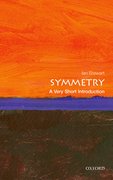By Ian Stewart
Symmetry has been recognised in art for millennia as a form of visual harmony and balance, but it has now become one of the great unifying principles of mathematics. A precise mathematical concept of symmetry emerged in the nineteenth century, as an unexpected side-effect of research into algebraic equations. Since then it has developed into a huge area of mathematics, with applications throughout the sciences.
Today we usually think of symmetry as a regularity of visual pattern—the sixfold symmetry of a snowflake, the circular symmetry of ripples on a pond, the spherical symmetry of a droplet of water or a planet. Here the role of symmetry is mainly descriptive. But there is a sense in which a natural process can also be symmetric, and the mathematics of symmetry can predict the results of that process, helping us to understand how nature’s patterns arise.
The key step towards a rigorous notion of symmetry arose not in geometry, but in algebra: attempts to solve quintic equations. The ancient Babylonians knew how to solve quadratic equations, and Renaissance Italian mathematicians discovered how to solve cubic and quartic equations, but here, everyone got stuck. Eventually, it turned out that no solution of the required kind exists for the general quintic equation.
The deep reason for this impossibility lies in the symmetries of the equation, which are the possible ways to permute its solutions while preserving all algebraic relations among them. When an equation has ‘the wrong kind of symmetry’ it can’t be solved by a formula of the traditional type. And equations of the fifth degree have the wrong kind of symmetry.
Mathematicians realised that symmetry is not a thing, but a transformation: a way to move or otherwise disturb something while—paradoxically—leaving it unchanged. For example, to a good approximation a human figure viewed in a mirror looks just like the original. Mixing up the roots of an equation doesn’t change suitable formulas in which they appear. Rotating a sphere through some angles produces an identical sphere.
The collection of all such transformations is called the symmetry group of the object; the structure of this group provides a powerful way to find out how the object behaves. The upshot of this discovery was a new, abstract branch of algebra: group theory.
Groups turned out to be fundamental to the study of crystals; the form and behaviour of a crystal depends on the symmetry group of its atomic lattice. Groups are also vital to chemistry: the way a molecule vibrates depends on its symmetries. The symmetries of a uniformly flat desert determine the possible patterns of sand dunes when the flat pattern becomes unstable. The symmetries of biological tissue determine the possible patterns of animal markings, such as stripes and spots. The symmetries of a cloud of gas determine the spiral form of a galaxy. The symmetries of space and time underpin Einstein’s theories of special and general relativity. The symmetries of fundamental particles constrain quantum field theory and affect the possibilities for unifying it with relativity.
Symmetry is such a huge idea, with so many diverse ramifications, that only an encyclopaedia could really do it justice. But it is possible to sketch its origins, give some idea of how the formal theory works out, sample its applications, and witness its diversity and generality. Moreover, the subject has great visual beauty and appeal: here, for once, mathematics can be a spectator sport, and audience participation is not mandatory.
I have spent much of my research career working on connections between symmetries and nature’s patterns, in fluid flow, animal movement, visual perception, and evolutionary biology—and I am just one of many. The well is nowhere near running dry. New applications are constantly being found. Symmetry is one of the truly deep concepts, possessing both visual and logical beauty. Its effects can be seen everywhere, if you know how to look.
Ian Stewart is Emeritus Professor of Mathematics at Warwick University. He is a well-established communicator of mathematics, and the author of over 80 books, including several on the subject of symmetry, such as Symmetry: A Very Short Introduction. His summary of the problems of mathematics, From Here to Infinity, and collections of his columns from Scientific American (How to Cut a Cake, Cows in the Maze), have been very successful, and his recent book Professor Stewart’s Cabinet of Mathematical Curiosities, has been a bestseller.
The Very Short Introductions (VSI) series combines a small format with authoritative analysis and big ideas for hundreds of topic areas. Written by our expert authors, these books can change the way you think about the things that interest you and are the perfect introduction to subjects you previously knew nothing about. Grow your knowledge with OUPblog and the VSI series every Friday and like Very Short Introductions on Facebook.
Subscribe to the OUPblog via email or RSS.
Subscribe to only mathematics articles on the OUPblog via email or RSS.
Image credits: Symmetrical landscape, By Johann Jaritz (Own work), Creative Commons Licence via Wikimedia Commons




Recent Comments
There are currently no comments.